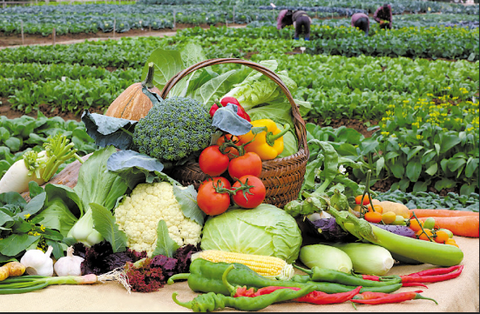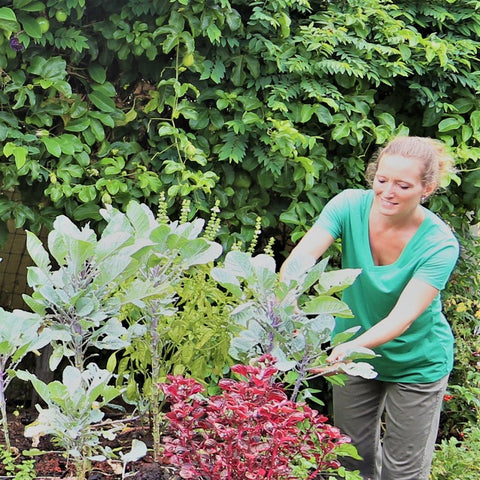As autumn arrives and the days grow shorter, many gardeners are faced with the challenge of maintaining a vibrant and beautiful garden in areas with limited sunlight. While some plants thrive in full sun, there is a diverse array of shade-loving plants that can add charm and elegance to your fall garden. In this comprehensive guide, we'll explore the world of shade-loving plants, revealing their unique characteristics and recommending some of the most beautiful options to enhance those dim corners of your outdoor space. The following content also has some reference value for raised garden beds.
The Beauty of Shade Gardens in Autumn
Shade gardens possess a unique allure throughout the year, but their charm truly shines in the fall. Here's why cultivating a shade garden for autumn beauty is a rewarding endeavor:
- Cool and Serene: Shaded areas often feel cooler and more serene during the warm autumn months, providing a peaceful retreat for relaxation.
- Rich Foliage: Shade-loving plants tend to have lush, green foliage that can turn into a stunning array of colors in the fall, from deep purples to fiery reds.
- Longer Bloom Period: Some shade-loving plants extend their blooming period into the fall, ensuring your garden remains vibrant even as the days grow shorter.
- Less Maintenance: Shaded gardens typically require less maintenance than their sun-drenched counterparts. With the right plant choices, you can enjoy a beautiful garden with minimal effort.
Selecting the Best Plants for Your Shade Garden
Before we delve into specific shade-loving plants, it's essential to understand the types of shade and the conditions of your garden. Shade can be categorized into three main types:
- Partial Shade: Also known as dappled shade, this type receives a few hours of direct sunlight each day and is ideal for many shade-loving plants.
- Full Shade: These areas receive less than two hours of direct sunlight each day and are typically found under dense tree canopies or north-facing walls.
- Dry Shade: Dry shade areas are challenging as they not only lack sunlight but also struggle with moisture competition from tree roots. Choosing plants that can tolerate these conditions is crucial.
Now, let's explore a variety of shade-loving plants that can elevate your autumn garden:
1. Hostas (Hosta spp.)
- Light Requirements: Partial to full shade
- Why Choose Them: Hostas are renowned for their striking foliage, which comes in various shades of green, blue, and even gold. In the fall, some varieties showcase yellow, gold, or purple hues. They're also known for their reliability and ability to thrive in a range of shade conditions.
2. Toad Lily (Tricyrtis spp.)
- Light Requirements: Partial to full shade
- Why Choose Them: Toad lilies are prized for their unique orchid-like flowers that bloom in the fall. Their spotted petals add an exotic touch to shade gardens. Varieties like Tricyrtis hirta can brighten up dim corners with their vibrant blooms.
3. Japanese Anemone (Anemone hupehensis)
- Light Requirements: Partial shade
- Why Choose Them: Japanese anemones are late bloomers, gracing your garden with elegant, daisy-like flowers in various shades of pink and white. Their blooms can last well into the fall, providing a late-season burst of color.
4. Heuchera (Heuchera spp.)
- Light Requirements: Partial to full shade
- Why Choose Them: Heucheras, also known as coral bells, are prized for their stunning foliage, which ranges from deep burgundy to lime green. Some varieties, like Heuchera 'Palace Purple,' take on richer hues in the fall.
5. Astilbe (Astilbe spp.)
- Light Requirements: Partial shade
- Why Choose Them: Astilbes are beloved for their feathery plumes of flowers that resemble cotton candy. They come in various shades, including pink, red, and white, and can add a delicate touch to shaded areas in the fall.
6. Foamflower (Tiarella cordifolia)
- Light Requirements: Partial to full shade
- Why Choose Them: Foamflowers are known for their airy sprays of dainty white or pink flowers. Their vibrant green foliage often takes on reddish or bronze tints in the fall.
7. Lungwort (Pulmonaria spp.)
- Light Requirements: Partial to full shade
- Why Choose Them: Lungworts are unique with their silver-spotted foliage and tubular flowers that transition from pink to blue as they age. Their leaves can become speckled with burgundy in the fall.
8. Ferns (Various species)
- Light Requirements: Varies by species; many thrive in partial to full shade
- Why Choose Them: Ferns are quintessential shade-loving plants with graceful, feathery fronds. While they don't produce showy flowers, their intricate foliage adds texture and elegance to any shade garden. Some species, like the autumn fern (Dryopteris erythrosora), turn a lovely coppery color in the fall.
9. Hellebores (Helleborus spp.)
- Light Requirements: Partial shade
- Why Choose Them: Hellebores, also known as Lenten roses, are early bloomers in late winter or early spring. Their nodding, cup-shaped flowers come in shades of white, pink, purple, and green. The leathery foliage remains attractive throughout the year, often taking on deep green or maroon hues in the fall.
10. Japanese Forest Grass (Hakonechloa macra)
- Light Requirements: Partial to full shade
- Why Choose Them: This grass, with its gracefully arching blades, adds a delicate, cascading element to shaded areas. In the fall, its green foliage can transform into brilliant shades of gold or red, making it a standout feature.
11. Wild Ginger (Asarum spp.)
- Light Requirements: Partial to full shade
- Why Choose Them: Wild ginger is prized for its lush, heart-shaped foliage. While it doesn't produce showy flowers, its dark green leaves can create a beautiful ground cover that remains attractive throughout the fall.
Design Tips for a Stunning Shade Garden in Autumn
Creating a stunning shade garden for autumn requires thoughtful planning and design. Here are some tips to help you make the most of your dimly lit spaces:
- Layered Planting: Combine plants with different heights and textures to create depth and visual interest. Taller plants like hostas and astilbes can provide a backdrop for lower-growing varieties like foamflowers and lungworts.
- Seasonal Interest: Choose plants that offer something unique in each season. Consider spring and summer bloomers, as well as those with captivating fall foliage or late-season blooms.
- Color Harmony: Pay attention to the color palette of your shade garden. While many shade-loving plants are known for their foliage, don't forget about complementary fall-blooming flowers that can introduce pops of color.
- Mulching: Apply a layer of organic mulch to help retain moisture, regulate soil temperature, and suppress weeds. This is especially important in shaded areas where soil tends to stay moist.
- Maintenance: Regularly remove dead or yellowing foliage to keep your shade garden looking tidy. Prune back any overgrown plants to maintain a balanced and harmonious appearance.
Embrace Autumn's Beauty in the Shade
Autumn is a season of transformation, and even the shadiest corners of your garden can be part of this enchanting journey. By carefully selecting shade-loving plants that offer captivating foliage and blooms, you can create a lush and inviting oasis that celebrates the beauty of fall. Whether you're designing a woodland retreat or enhancing existing shaded areas, these plants will turn dim corners into vibrant showcases of autumn's splendor. Embrace the cool, serene ambiance of your shade garden, and let the magic of the season unfold before your eyes.












